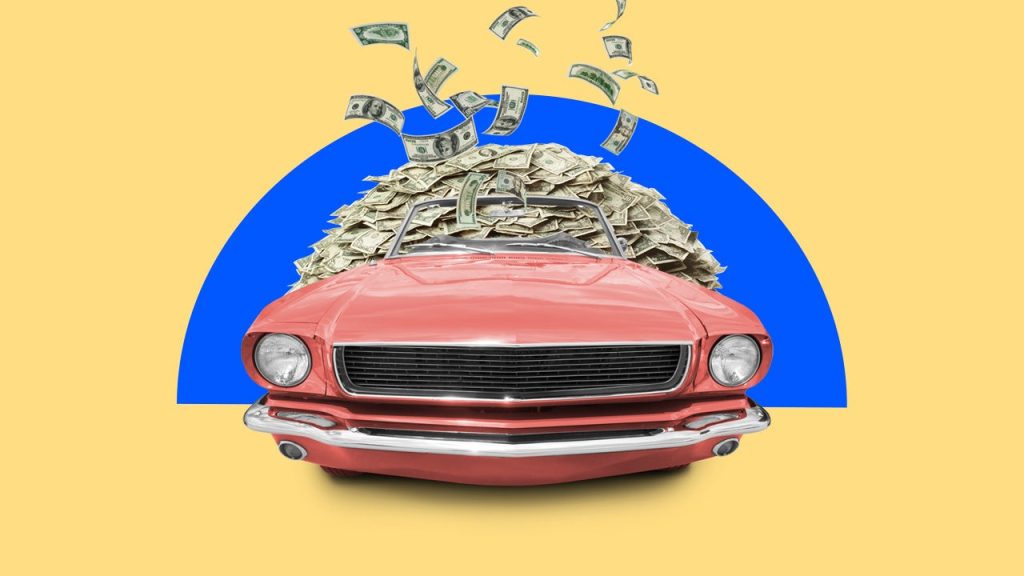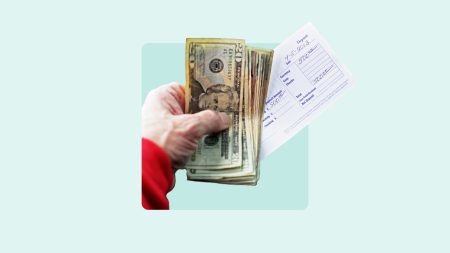Images by Getty Images; Illustration by Issiah Davis/Bankrate
Key takeaways
- As a general guideline, your car loan payments should be less than 10 to 15 percent of your take-home pay each month.
- New and used vehicle prices have remained high over the last few years, and experts predict that they are unlikely to decrease significantly in the near future.
- To secure the best deal, improve your credit score and save up for a sizable down payment long before you start car shopping.
When car shopping, keep an eye on both the price of the vehicle and current interest rates. If you already have a car and are thinking about refinancing your auto loan, pay attention to rate trends so you can switch lenders at a time that benefits your budget.
Your credit score, payment history and financial situation also weigh heavily on the interest rate you pay and the size of your car payment. If you are trying to avoid high auto loan rates, look for vehicles that won’t stretch your budget and find a lender that fits your needs.
Will car payments be higher in 2025?
If you’re considering purchasing a vehicle in the last few months of 2025, Ivan Drury, director of insights at Edmunds, says there have been improvements in product availability. He notes that MSRP discounts may also continue to increase. Even still, the actual selling price of vehicles has gone up.
“This is due to … consumer preferences for SUVs and trucks … along with more vehicles driven by electrified powertrains,” Drury explains. “Additionally, the Fed has signaled that interest rates are not guaranteed to fall throughout the year, and the continued threat of tariffs … could result in notable price increases.”
Drury shared his top tips for vehicle buyers in 2025
- Buy sooner. With so much uncertainty ahead, it may be wise to buy now if you’re financially ready rather than waiting to see how prices fluctuate over the coming months.
- Watch your trade-in value. Different dealerships have different inventory needs, so always shop your trade-in. The more you get on a trade-in, the more you can put down on a new vehicle purchase.
- Keep an open mind. A lot has changed over the last several years, and many automakers have revamped their lineups. With many models offering similar tech and safety features, compare costs rather than sticking to one brand.
When we requested an updated forecast for 2025, Drury added that the impact of tariffs won’t be felt until 2026 models are available. With increased sale prices and no guarantee of better rates, buyers will need to be strategic in their shopping to avoid car payments that are too expensive for their budget.
How much should your car payments be?
According to Karen Bennett, senior consumer banking reporter at Bankrate, your monthly vehicle payment should not exceed 10 to 15 percent of your salary.
To find this range for your salary, divide your annual pre-tax take-home salary by 12. Multiply that number by 0.1 to find the low end of the range or 0.15 to find the high end.
| Salary | Maximum monthly car payment (10%) | Maximum monthly car payment (15%) |
|---|---|---|
| $20,000 | $167 | $250 |
| $40,000 | $333 | $500 |
| $60,000 | $500 | $750 |
| $80,000 | $667 | $1,000 |
| $100,000 | $833 | $1,250 |
Keep in mind that your payment is only one part of your car budget. The general rule of thumb is to keep every cost — like insurance, gas and maintenance — under the 15 percent range to ensure you aren’t overspending.
One effective way to ensure your finances stay in check is to follow the 50/30/20 rule, Bennett explains.
“You’ll allocate half your paycheck to essential expenses like rent, food and transportation,” she says. “Another 30 percent will go toward nonessentials like dinner out and streaming services, and 20 percent will be put into savings.”
How much should your next vehicle cost?
Beyond calculating your ideal monthly payment, you can also use these guidelines to calculate the amount you can afford to finance the next time you purchase a new or used car.
The Edmunds car affordability calculator is a good place to start when determining how much you can afford to pay.
- First, input your target monthly payment following the 15 percent maximum to ensure you do not over-extend your salary when paying for your vehicle.
- Estimate your interest rate based on auto loan industry averages for your credit score. The better your credit score, the more competitive your interest rates will likely be.
- Finally, try different loan terms to see how they impact the amount you can afford. Longer terms mean a lower monthly payment — but more interest paid over time.
If you plan on trading in your old vehicle, include it as a down payment. A larger down payment offsets your monthly payment because it allows you to finance less. According to the most recent Edmunds data, the average down payment for a new vehicle was $6,433 in the second quarter of 2025.
However, determining how much you can afford requires thinking beyond the sticker price. Your total monthly cost should not exceed 20 percent of your monthly payment. While crunching the numbers may feel like a lot of work, it helps you purchase a vehicle within your budget and reduces your risk of falling behind and having your vehicle repossessed.
Consider more than the monthly car payment
When reviewing your budget, don’t forget to consider other car-related expenses, such as your insurance, maintenance fees and fuel costs.
- Maintenance
-
Routine maintenance — such as oil changes, tire rotations and replacing windshield wipers — are necessary for keeping your vehicle in good shape.
- Fuel costs
-
How much you spend on fuel, or charging fees if you’re financing an EV, will also add to your monthly car expenses.
What to do if your car payment is too high
If your current monthly payment is overextending your budget, there are ways out. Consider refinancing, trading in or reaching out to your lender as potential ways to make your payment more manageable.
- Refinance your loan. Compare current auto loan refinance rates to find a loan that better fits your budget. Start by calculating potential savings by lowering your potential interest rate or extending your loan term.
- Trade in your vehicle. 2025 should be much friendlier for borrowers interested in trading in their vehicle compared to last year. By trading in your car, you can get a less expensive vehicle, thus reducing your monthly costs. Consider working directly with the dealership you purchased from to secure the best deal.
- Talk with your lender. Your lender may be able to help you if you can’t afford your car payment. It’s in the lender’s best interest to get paid for the money it has loaned you, so it may be willing to modify your loan or offer to defer payments.
Bottom line
A healthy financial plan includes a budget that you can stick with. If you plan on financing a car in the near future, making your monthly payment affordable should be a top priority. Strive for a car payment that does not exceed 15 percent of your net or take-home income. If you think your current car payment is too high, contact your lender to discuss your options or consider trading your vehicle in for something more affordable.
Why we ask for feedback
Your feedback helps us improve our content and services. It takes less than a minute to
complete.
Your responses are anonymous and will only be used for improving our website.
Help us improve our content
Read the full article here












